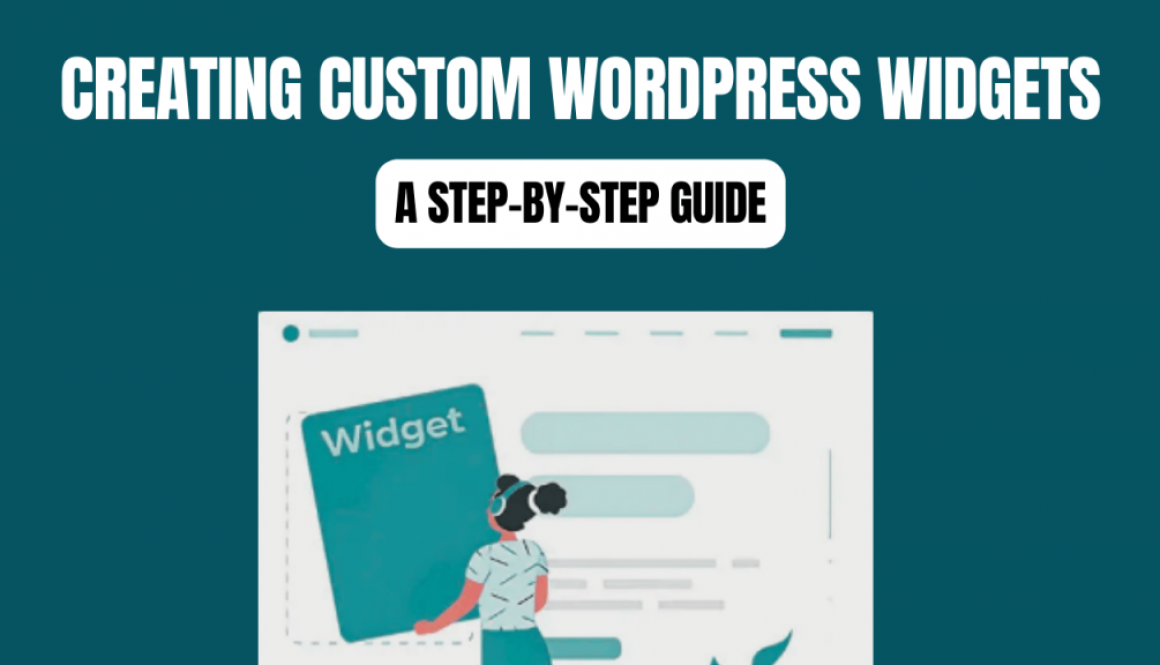Creating Custom WordPress Widgets: A Step-by-Step Guide
WordPress widgets are an essential part of the platform. They allow users to add various functionalities to their websites, such as displaying recent posts, showing a search bar, or adding a newsletter sign-up form. However, sometimes the available widgets may not meet specific requirements. In such cases, custom WordPress widgets can be created to add custom functionalities to a website.
In this guide, we will take you through the process of creating custom WordPress widgets. We will start with a brief overview of WordPress widgets and a step-by-step guide to creating a custom widget.
Overview of WordPress Widgets
WordPress widgets are small blocks of code that add specific functionalities to a website’s sidebar, footer, or any other widget area. Widgets are easy to use and do not require any coding skills to add to a website.
By default, WordPress comes with several pre-built widgets, including Recent Posts, Categories, Archives, Search Bar, Meta, and many more. However, if you require specific functionality not available in the default WordPress widgets, you can create your custom widget.
Creating a Custom WordPress Widget
Creating a custom WordPress widget is a straightforward process that involves the following steps:
- Create a new PHP file for the widget.
- Add the widget header information.
- Create the widget class and extend the WP_Widget class.
- Define the widget’s settings and controls.
- Output the widget’s HTML.
Let’s dive into each of these steps in detail:
Step 1: Create a New PHP File for the Widget
The first step in creating a custom WordPress widget is to create a new PHP file for the widget. This file will contain the code for the custom widget. It’s best to name the file after the widget’s name to make it easier to identify.
Step 2: Add the Widget Header Information
The next step is to add the widget header information. This information includes the widget’s name, description, author, and version. Here’s an example of what the header information should look like:
/* Widget Name: My Custom Widget Description: Adds a custom widget to the website. Author: Your Name Version: 1.0 */
Step 3: Create the Widget Class and Extend the WP_Widget Class
The next step is to create the widget class and extend the WP_Widget class. The WP_Widget class is a built-in WordPress class that provides the necessary functionalities for creating widgets. Here’s an example of how to create the widget class:
class My_Custom_Widget extends WP_Widget {
//code here
}
Step 4: Define the Widget’s Settings and Controls
The fourth step is to define the widget’s settings and controls. This step involves adding fields to the widget form that allow users to customize the widget’s behavior. Here’s an example of how to define the widget’s settings and controls:
class My_Custom_Widget extends WP_Widget {
public function __construct() {
parent::__construct(
'my_custom_widget',
'My Custom Widget',
array( 'description' => 'Adds a custom widget to the website.' )
);
}
public function form( $instance ) {
// Widget form fields here
}
public function update( $new_instance, $old_instance ) {
// Save widget options here
}
public function widget( $args, $instance ) {
// Widget output here
}
}
Step 5: Output the Widget’s HTML
The final step is to output the widget’s HTML. This step involves using the values entered by the user in the widget form to create and output the HTML for the widget. Here’s an example of how to output the widget’s HTML:
class My_Custom_Widget extends WP_Widget {
public function __construct() {
parent::__construct(
'my_custom_widget',
'My Custom Widget',
array( 'description' => 'Adds a custom widget to the website.' )
);
}
public function form( $instance ) {
// Widget form fields here
}
public function update( $new_instance, $old_instance ) {
// Save widget options here
}
public function widget( $args, $instance ) {
// Widget output here
$title = apply_filters( 'widget_title', $instance['title'] );
$text = apply_filters( 'widget_text', $instance['text'] );
echo $args['before_widget'];
if ( ! empty( $title ) ) {
echo $args['before_title'] . $title . $args['after_title'];
}
if ( ! empty( $text ) ) {
echo '<div class="widget-text">' . $text . '</div>';
}
echo $args['after_widget'];
}
}
In this example, the widget outputs a title and text entered by the user in the widget form. The apply_filters function is used to sanitize the input and prevent any malicious code from being executed.
In addition, User Meta Pro has login, registration, and profile widgets. It will automatically be added after the plugin activation.
Overall, creating a custom WordPress widget is a simple process that can be done in just a few steps. By creating custom widgets, you can add specific functionalities to your website that may not be available in the default WordPress widgets.

